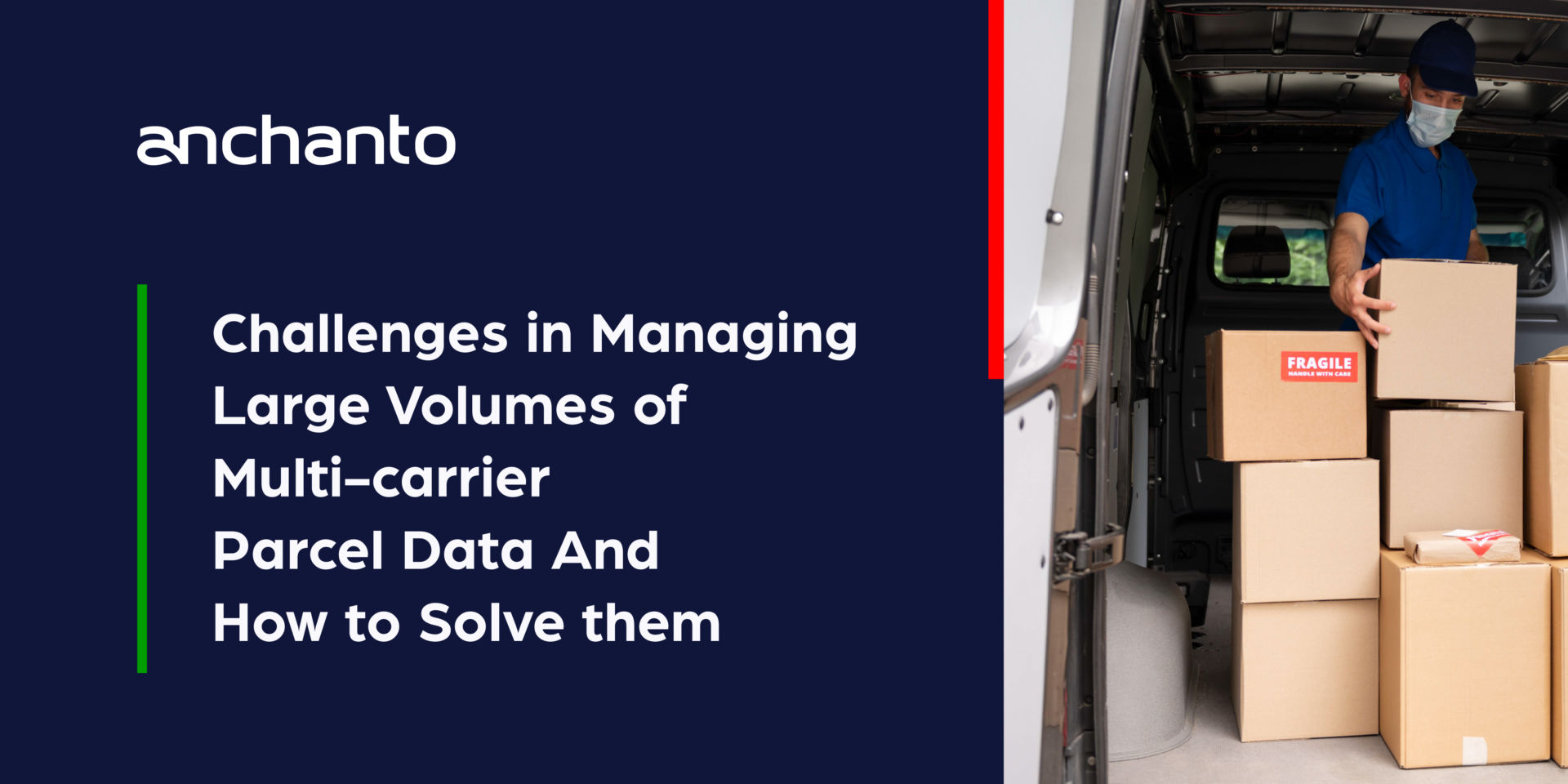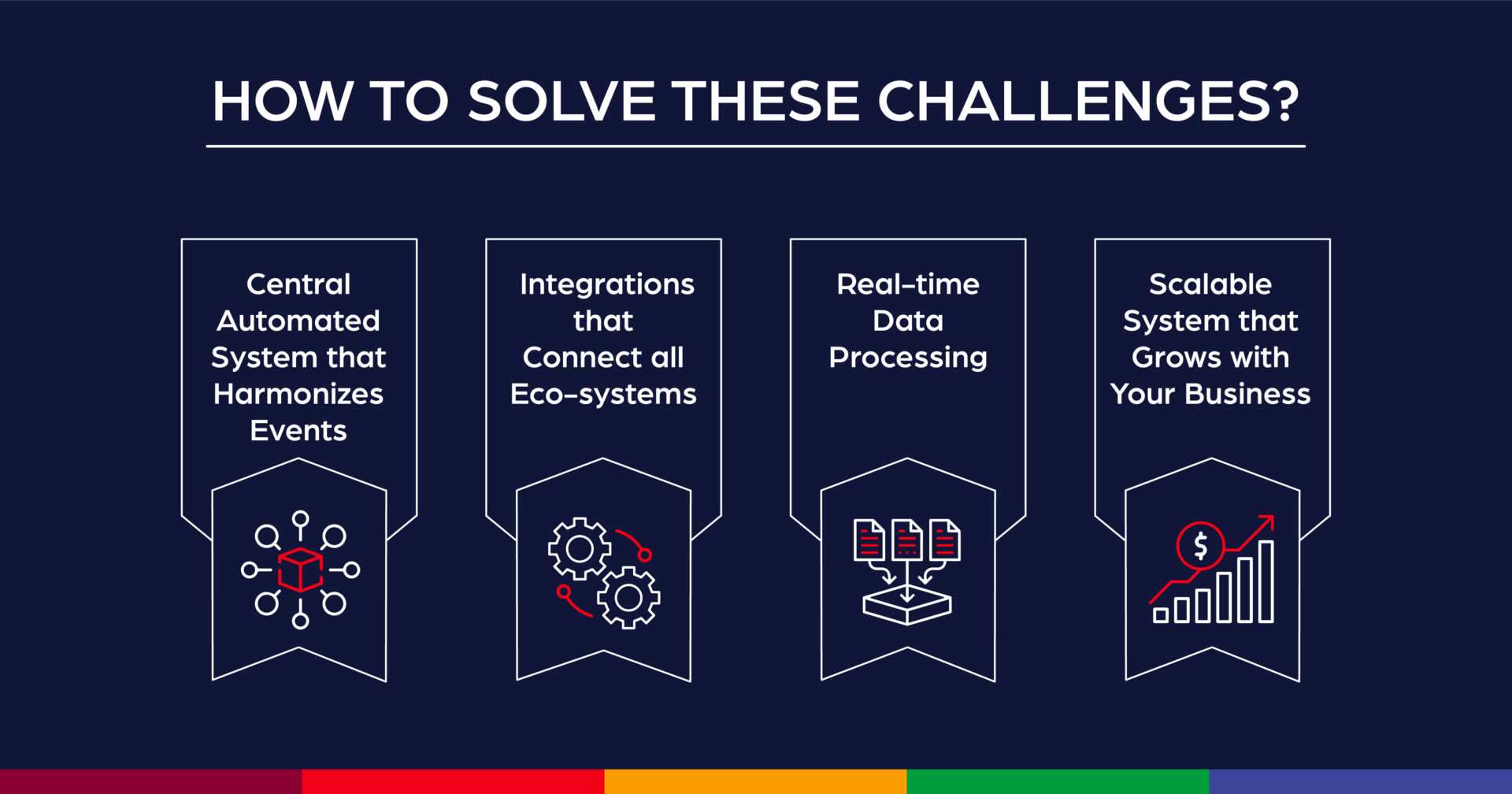Challenges in Managing Large Volumes of Multi-carrier Parcel Data and How to Solve them
Blogs
The unprecedented growth of e-commerce logistics in the past few years has complicated the critical task of tracking parcels accurately and efficiently. As logistics companies collaborate with multiple carrier partners, B2B parcel tracking information has become drastically voluminous and diversified. Obtaining and managing this information has become a complicated task, failing which logistics companies face the risk of losing control over their network. In this blog, we will explore logistics companies’ challenges in tracking large volumes of parcel data from multiple carriers and discuss effective solutions to overcome them.
Challenges
1. Multiple Carriers with Diverse Event Formats:
One of the significant challenges faced in tracking parcel data is the varied event formats used by different carrier partners. Each carrier may have its own set of events associated with a parcel, making it difficult to consolidate and analyze the information effectively. This diversity can lead to discrepancies, data loss, or errors in the tracking process.
2. Unstable Systems due to High Data Volumes:
Large volumes of parcel data generated by multiple carrier partners can strain existing tracking systems, causing instability and performance issues. Traditional manual or legacy systems may not be equipped to handle such high data loads, leading to delays, system crashes, or incomplete data processing.
3. Inability to Manage WISMO Queries:
Customers often have “Where is My Order” (WISMO) queries regarding their parcels’ whereabouts. Tracking multiple carriers’ data manually can make it challenging to provide accurate and timely updates to customers. This can result in customer dissatisfaction and increased support overhead.
4. Lack of Real-time Data Access:
Without real-time access to parcel data from multiple carriers, businesses may struggle to provide up-to-date tracking information to their customers. Delayed or outdated information can lead to confusion, loss of trust, and a negative impact on the customer’s experience.
5. Limited Visibility on Exceptional Situations:
When exceptional situations occur, such as delays, returns, or customs issues, it becomes crucial to have visibility into the specific details of each parcel’s journey. Lack of access to this information from multiple carriers can impede efficient problem-solving and resolution.
Traditional approaches to tracking parcel data often involve manual entry, spreadsheets, or outdated legacy systems. These methods are not scalable, prone to human errors, and lack the automation necessary to handle the complexities of tracking large volumes of data from multiple carrier partners.
To address these challenges, businesses need to embrace a robust technology solution that streamlines the tracking process and enhances data management capabilities. Such a solution can provide real-time visibility, automate data processing, and ensure scalability to accommodate growing business needs.
How to Solve These Challenges?

1. Central Automated System that Harmonizes Events:
Implementing a central automated system can help standardize and harmonize events across multiple carrier partners. This system acts as a centralized hub that consolidates and processes parcel data, making it easier to track and analyze. It eliminates the complexities arising from diverse event formats and ensures data uniformity.
2. Integrations that Connect all Eco-systems:
Integrating various systems, including carrier partners, order management systems, warehouse management systems, CRM, and more, can streamline the data flow and enable seamless information exchange. These integrations facilitate real-time updates, improve visibility, and empower businesses to respond promptly to customer inquiries and exceptional situations.
3. Real-time Data Processing:
Investing in a technology solution that enables real-time data processing is essential. This ensures that tracking information remains up-to-date and accurate, enabling businesses to provide timely updates to customers. Real-time processing also facilitates the identification of potential issues, such as delays or disruptions, allowing proactive problem-solving.
4. Scalable System that Grows with Your Business:
Choosing a scalable technology solution is crucial to accommodate the growing volumes of parcel data. As your business expands and collaborates with more carrier partners, the system should be able to handle increased data loads without compromising performance. Scalability ensures long-term viability and minimizes the need for frequent system overhauls.
Conclusion:
Tracking large volumes of parcel data from multiple carrier partners can present various challenges, including diverse data formats, system instability, and limited visibility. By embracing a robust technology solution that offers centralized automation, integrations, real-time data processing, and scalability, businesses can overcome these challenges and provide accurate, timely tracking information to their customers. Investing in efficient tracking systems ultimately enhances the customer experience, fosters trust, and supports the growth of e-commerce businesses in an increasingly competitive market.
